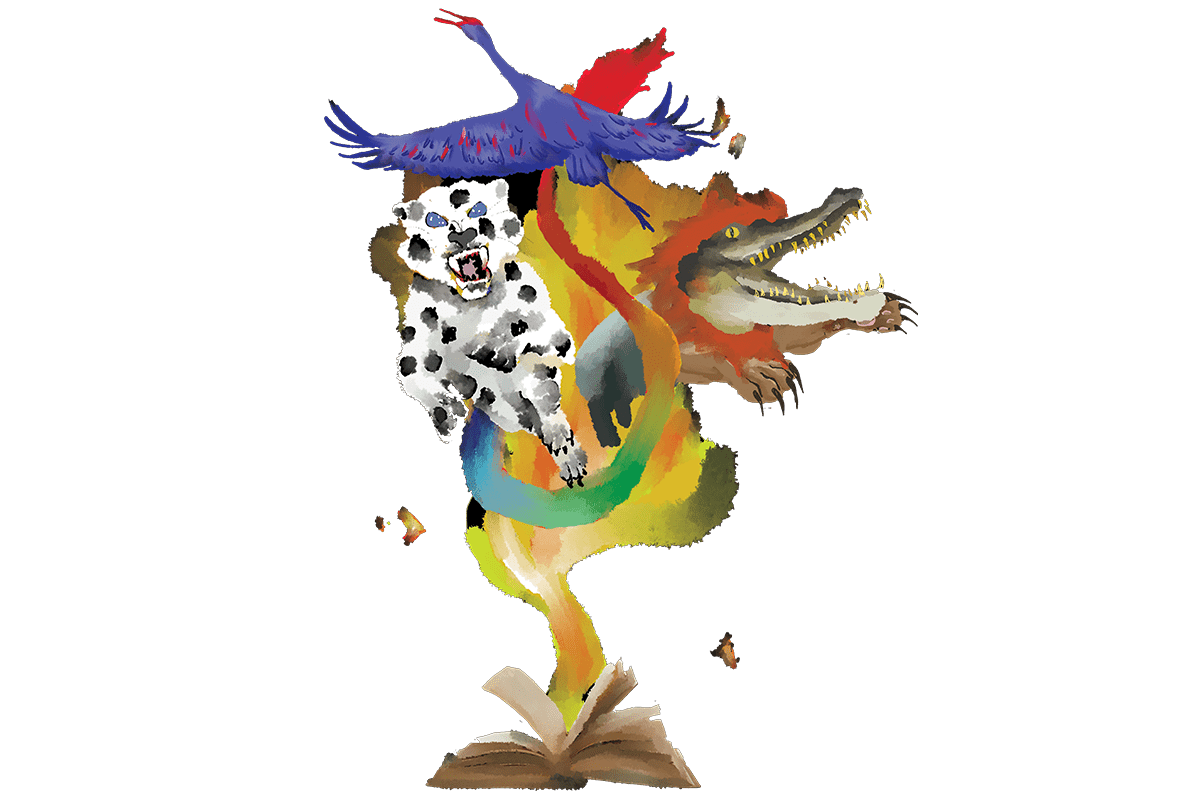Dragons, Phoenix, Kraken, Sphinx… As humans, we never seem to get tired of the old tales, magical myths, and adventurous stories about mystical creatures. Each culture has their own history of creatures that defy explanation. Let me take you on a journey across space and time to find out more.
Over the mountains, over the sea
“Wish to be a Bi Yi bird and fly together with you in the sky” — here, we find a famous Chinese idiom to describe loyal love, from a poem The Song of Everlasting Sorrow (Cháng Hèn Gē) written by Bai Juyi. Each Bi Yi bird only has one eye, one leg and one wing. They can fly only when they are side by side. The Bi Yi bird is recorded in an ancient Chinese book called Classics of Mountains and Seas (Shān Hǎi Jīng). With a history of more than two thousand years, the book is mainly about the magical flora and fauna found in the mountains and the sea.
Travelling in the world of Shān Hǎi Jīng, you may find yourself on a strange hill filled with streams and rivers, but there are no trees or grass. It’s called Mount Di (Dǐ Shān). This is just the beginning. Every sentence after this one will become stranger and stranger. There’s a kind of fish here called “Lù”. It looks a bit like a cow or an ox. However, it has a snake’s tail, and wings too. Let me remind you that there’s a lot of water here, except Lù, even as a kind of fish, lives on the hillsides. It also hibernates. If you have swelling issues, eating Lù could help.
Throughout the dynasties, there are other collections of creatures, monsters and magical stories, such as the Album on Beasts (Shòu Pǔ). The book is crafted by two court painters under the order of the Qianlong Emperor of the Qing Dynasty. Many creatures are recorded as signs of auspiciousness to show the prosperity of the country, such as Qilin. Confucius is said to be born after his mother dreamt about Qilin in her arms. If you are stuck on assignments, maybe Bai Ze can help you. It is said that they know everything. The Yellow Emperor recorded their knowledge of how to defend the evil monsters, therefore protecting his citizens.
We hide, until late night
In Japanese folklore, there’s an idiom called Hyakki Yagyō, or “night parade of a hundred spirits”, when the supernatural comes into the world of reality at night. I learnt about Japanese monsters and spirits, or Yōkai, mainly through murder mystery fictions, such as Kubinashi no gotoki Tataru Mono. Kubinashi can look like a human but act with their heads off.
Don’t be too scared, Yōkai do not always look horrible. I found a Yōkai called Nurarihyon in the artwork collections of Toriyama Sekien. They looked like an elegant gentleman. When they walk straight into someone’s home on a busy night, start drinking tea, enjoying tobacco and high quality hospitality, no one would have a doubt that they weren’t human or that they were not invited.
Riddles of the Sphinx
My curiosity with ancient Egypt began with the game Predynastic Egypt. In the game, you can worship cults to gain the blessings for your tribe to develop: Falcon Horus supports hunting, whilst Heavenly Cow Nut helps with farming. Wepwawet the Opener of the Ways has a head of a jackal. These creatures seem to have been highly respected by ancient Egyptians, with many of them seen as sacred. For example, the signs of snakes, or uraeus, were traditionally worn by the Pharaoh and their family.
The line between whether a creature in ancient Egypt stories is a monster or a god is somewhat of a conundrum. When I researched “Ammit”, some said that she is a demon, and some said she is a beast. Others said she is a god. Ammit has a crocodile head, lion’s front legs and hippo’s hindquarters. She eats the unpurified heart of the dead.
The idea of magical creatures has enthralled people for centuries. Understanding what creatures people believed in throughout time allows us to understand more about their belief systems and what they valued. It can be a fascinating journey to explore these creatures and their old tales, magical myths and adventurous stories.





